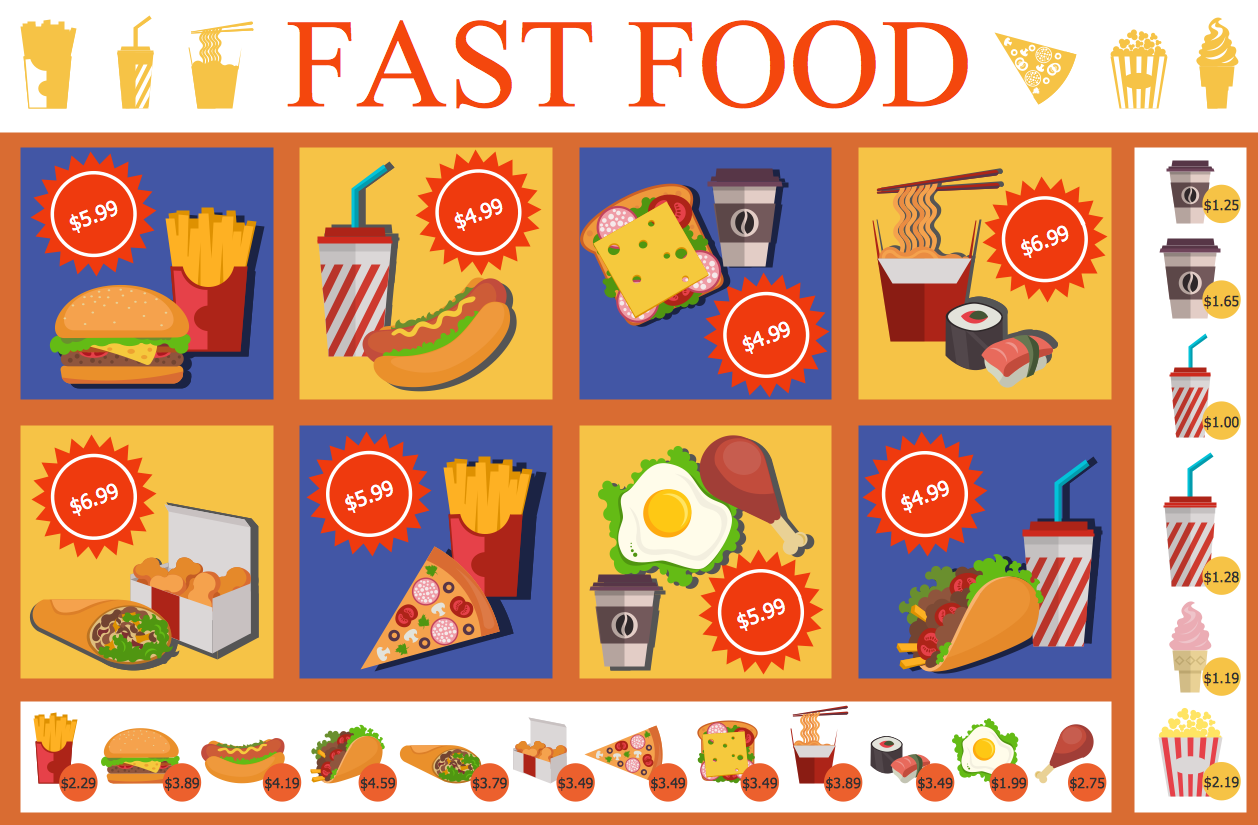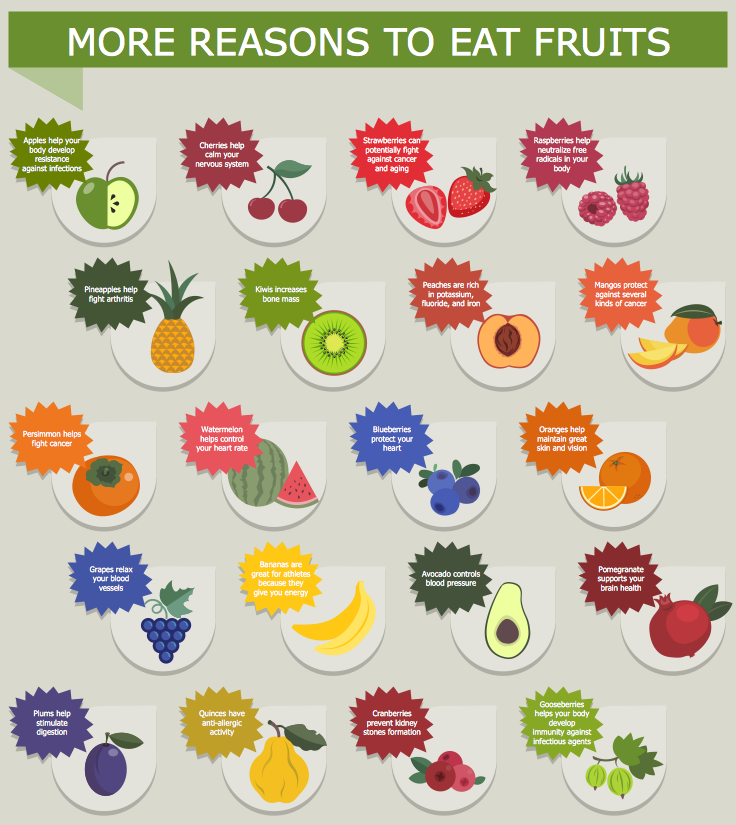Food is big business. We all need it, and we like variety in our diet — most people have, and expect, a wide selection of international cuisine available locally, through supermarkets or specialized restaurants. Increasingly, a further expectation is that food is prepared and served at a rapid rate, a by-product of the time constraints placed on us by modern living. It is no surprise then, that the last few decades have seen a dramatic rise in the number of 'fast-food' outlets, and shopping mall food courts, offering quick, cheap meals that can be delivered or taken away from the shop. Despite this (or perhaps because of), there always exists a huge market for healthy living, nutritional information, and diet methodology; juice bars, health food shops and vegan restaurants are some of the establishments that position themselves to provide services in this area.
While large fast-food chain establishments have existed on the high street for many years, and street vendors operating from stalls or carts even longer, the growth of large shopping precincts and entertainment centres has seen the establishment of the modern 'food court'. The standard design is a selection of disparate cuisines being sold around a central eating area. In the Americas and Europe, it is common to find a few examples of the big chains — McDonalds, Starbucks, KFC — as well as more national-level eateries such as Greggs in the UK, or Dairy Queen and Orange Julius in the USA. Similar food attractions can be found in Asia, where they form something like an impromptu market, with vendors and street carts gathered around a covered pedestrian area decked with seating and tables.
Example 1. Food Court Infographics — Fast Food Menu
Globalization has seen the export and import of the most popular cuisines from around the world, even to the point where a foreign meal can be adopted as a favourite national dish — such as in England, where a takeaway curry (originally from India) is often the evening meal of choice. Chinese, Indian, Thai and Italian outlets have all become ubiquitous and well-liked options for take-away food. In return, the West offers its fast-food chains — McDonald's alone has 31,000 restaurants, spread over 126 countries in 6 continents. Subway and Pizza hut operate in over 90 countries each, while the German company Wienerwald has entered into African and Asian markets.
Another effect of globalization is that we are more well travelled now than ever before — and this means a lot of exposure to foreign tastes and delicacies, sometimes with little information as to what is actually on the plate in front of you. This is why most of the fast-food restaurants you are familiar with will make a point to provide visual displays; food related imagery that gives you a better indication of what meals are available. You can see it everywhere — on brand logos, in advertising, on menus and in leaflets, or used to illustrate food infographics. Using food art and imagery helps educate those unfamiliar with the cuisine, and adds a reference point to textual information.
Here is a list of describing the sort of fast food places you can expect to find in a food court, or as an outlet on the high street, and some additional information on practical uses for food themed illustrations and infographics:
- Thai/Chinese
East Asian cuisine is based largely around the staples of rice and noodles, which can be accompanied by meats and seafood, as is often fried. So common place is this type of food in the West, that it can be found in high-class restaurants, as well as cheaper takeout options. Noodle bars and fried wok stalls are becoming increasingly popular as smaller stalls in food courts.
A food court in Thailand can contain a number of rice and noodle stalls, each offering a different cooking style or meat cut. For travellers, it's important that menus and displays are adequately illustrated, to save having a surprise meal of the local delicacy, such as larvae or insects!
- McDonald's/KFC/Burger King etc.
Sometimes known as burger joints in the USA, the major fast-food chains are spread far across the world, selling largely the same menu, save for certain items that are specific to the country or area. As well as burgers, they offer fries, fried chicken, milkshakes and ice cream, generally processed and of a low quality, but cheap and quickly prepared.
You will see examples of food art and illustrations throughout their stores. McDonalds add an infographic to your tray, showing calorie content and ingredients within their products. KFC brand themselves using cartoon depictions of fried chicken. Almost all will have a menu display behind the counter that groups pictures of food items together to represent the different meals on offer.
Example 2. Design Elements Food Court Infographics — Fast Food
- Indian
As mentioned, the traditional Indian curry has become a national dish in the UK, and enjoys popularity elsewhere. It uses traditional Indian spices and cooking styles, to create dishes that can be measured by hotness — ranging from a mild korma to a hot and spicy vindaloo. Although originally made as vegetarian dishes, restaurants in the West add either beef, lamb or chicken to the meal.
One very specific way you will see curry outlets using food imagery, is to denote just how hot a dish is — Indian menus often use a 'chilli system', where one picture of a chilli next to a menu entry means it's a mild curry; five little chilli icons means bring the tissues and milk!
- Juice bars and Salad bars
We all know fast food isn't great for us, and it's not going to give you a very balanced diet. There are enough people concerned with what they eat to create opportunities for outlets that provide a more organic form of produce. Juice bars are something of an antithesis to the milkshake bar — a place where you can select from a range of fresh fruit and vegetables, which are then blended into a smoothie. Salad bars are a buffet selection for people who want to take the vegetarian option.
Food infographics can be used in this style of establishment to promote healthy living, give information on invaluable 'super foods', highlight their nutritional content, and provide information on how to maintain an effective diet.
Example 3. Food Court Infographics — More Reasons to Eat Fruits
Taste is obviously the final test, but how food is presented, it's visual appeal, is also a crucial factor in what we gravitate towards. The pictures in McDonald's will always look plump and delicious, regardless of how the burger actually appears. Food imagery can be found in branding, advertisement, menus and shop art, so it is important for companies to have the software and illustration library necessary to create professional, visually striking designs.
ConceptDraw PRO, the award winning diagramming software from CS Odessa, provides a powerful platform with which to create graphic-driven works. To extend PRO's functionality, new solution are released regularly to help in a wide variety of illustrative fields. The latest, the Food Court solution, provides a bright collection of colorful food related images and icons, divided into themed libraries; suitable for use as menu graphics, on marketing leaflets, or accompanying text on an infographic. Also included are samples of food based drawings, a comprehensive help section, and video tutorials on a range of subjects, giving handy tips and leaving you free to concentrate on creating professional looking food art, suitable for any shop front, poster or menu.



No comments:
Post a Comment